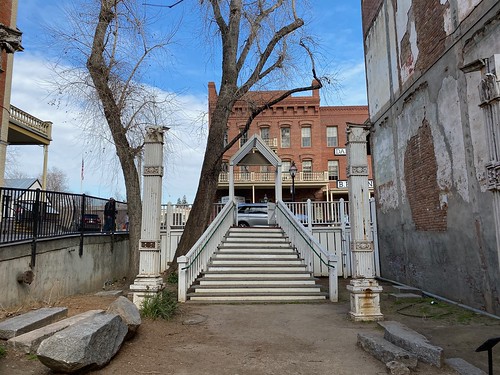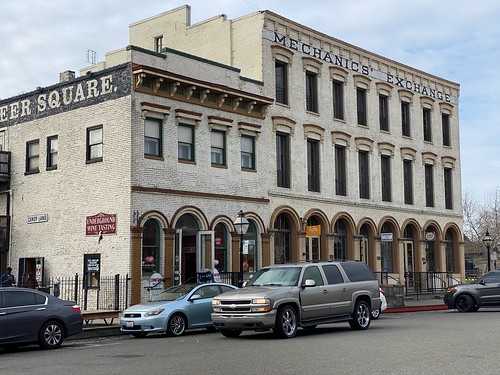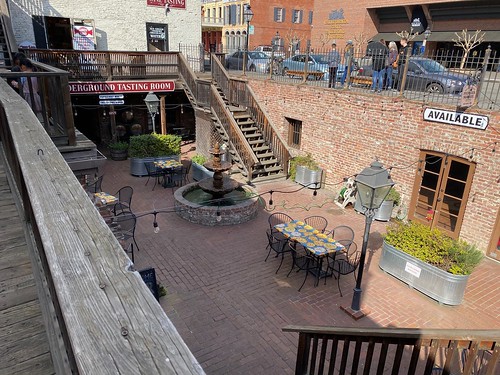The waterfront is where Sacramento began, although today it barely feels like a part of the city. It’s all but cut off from downtown Sacramento by an enormous freeway, and most of what you’ll find there are your pretty typical tourist trap stores — tacky jewelry, shirts with “funny” slogans you can buy anywhere, funnel cake vendors, etc.
If you know where to look though there is a lot of interesting history to see. Your best bet to learn more about the history of the area is either the California State Railroad Museum (which I didn’t visit on this trip) or the Sacramento History Museum.
I booked a spot on the Sacramento History Museum’s Underground Tour, which also includes free admission to the museum. Unfortunately for me most of the museum was closed for a refresh of the exhibits. And unfortunately for you, photography isn’t allowed in the underground portions of the tour so you’ll just have to either read my descriptions, or go on the tour yourself.
The Underground Tour was led by a guide who was very much in character as a deputy during the gold rush. As he explained Sacramento began as a series of tents next to the river, which regularly flooded. Later on wood buildings were erected, built tall enough that boats could float between them on the second floors when the area flooded.
Wood structures burn down of course, and nothing from that era stands today. It was all replaced by brick structures after a particularly destructive fire. Yet that didn’t work out well in the long run as the mining activities in the area just caused the floods to get more and more intense.
Eventually the residents decided to do three things: divert the American River around the city, give the railroads land along the Sacramento river in exchange for constructing levies, and manually jack up over 100 brick buildings by about 25 feet to match the new street level set by the levies. Oh, and they jacked the buildings up while people were still working in them, which meant getting in and out required climbing a series of ladders.
The tour goes under two buildings in what are now the basement levels. The second one has excavation sites where various materials have been found, including an early toothbrush, a set of weighted dice to cheat at gambling, and what’s believed to be an early painting of Abraham Lincoln.
Alleys in the area were never raised the entire height, but instead slope downward by about 12 feet. A brick patio in one of the above photos was also not brought up to the full height.
By far the most random and disgusting thing I learned on the tour was when the guide pulled out two corncobs — sans corn kernels — and asked “does anyone know what these are for?” As it turns out, they were used for wiping yourself after going to the bathroom. The worst part is you could wash them off in the river and reuse them — the same river where people were getting their drinking water.
My recommendation: Although most of old Sacramento is pretty sad these days, there’s a lot of history to uncover if you do your research and plan ahead. Do not go unprepared.



